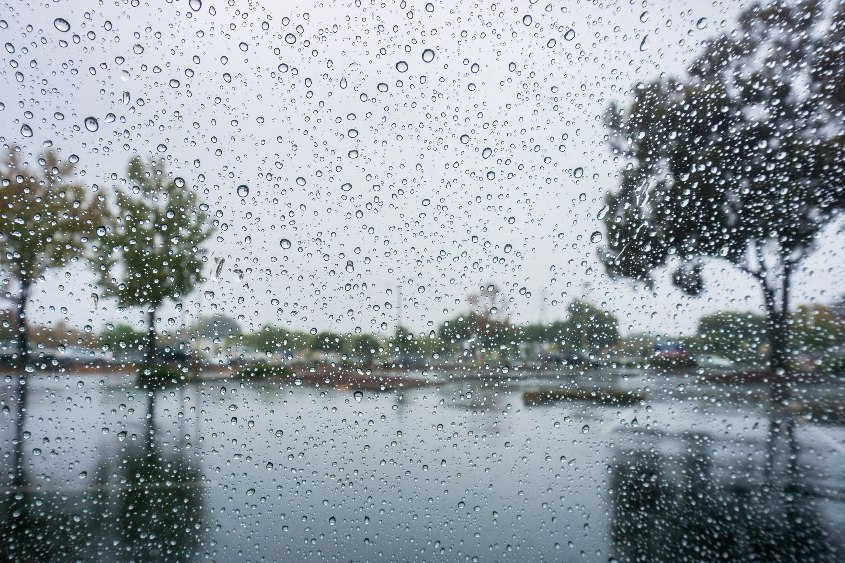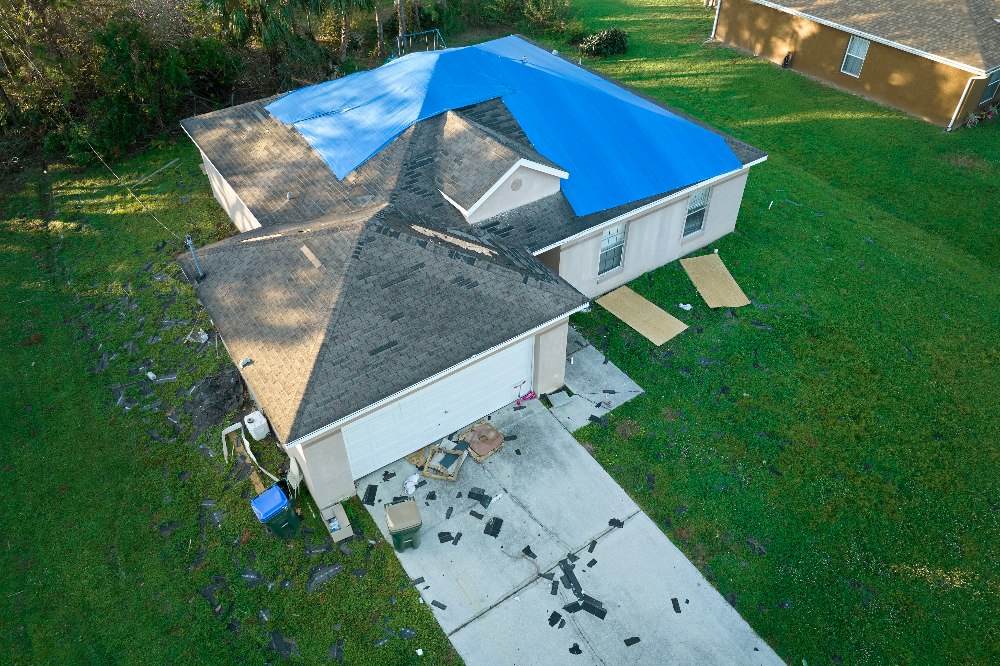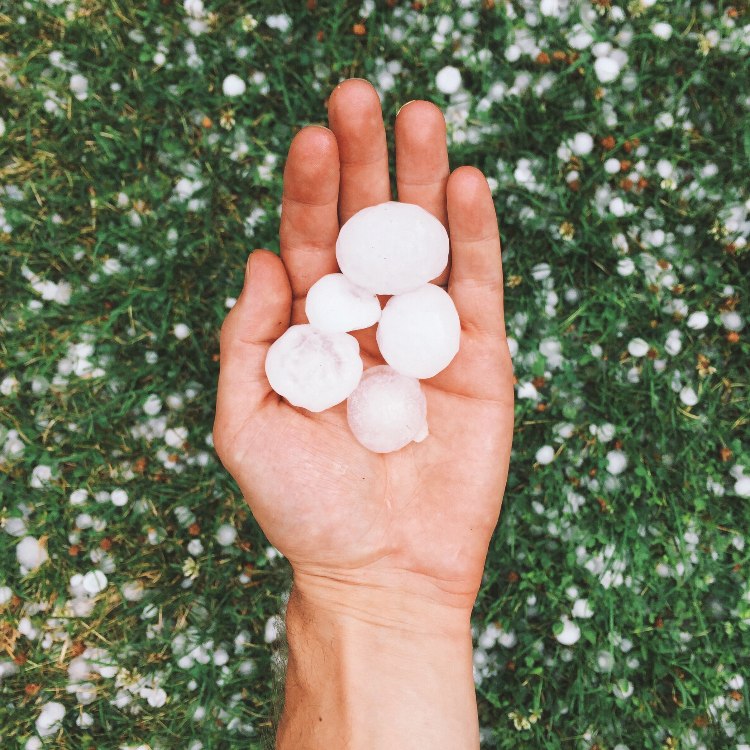
Central Texas has experienced some of the most severe hailstorms in recent memory, with golf ball-sized hail battering roofs across Austin, Round Rock, Cedar Park, and surrounding communities. If your property was in the path of these storms, your roof may have sustained damage that isn’t immediately visible from the ground—but could lead to costly problems if left unaddressed.
At DG Roofing & Construction, we’ve been helping Austin-area homeowners and businesses recover from hail damage for years. Understanding how to identify hail damage early can mean the difference between a straightforward insurance claim and extensive water damage repairs down the road.

Why Hail Damage Detection Matters
Texas leads the nation in hail damage claims, and for good reason. Our state’s unique geography creates perfect conditions for severe thunderstorms that produce large hail. What many property owners don’t realize is that hail damage often isn’t immediately obvious—and waiting too long to address it can result in:
- Voided Insurance Claims: Most insurance policies have strict deadlines for reporting storm damage
- Progressive Deterioration: Small impacts can worsen over time, leading to leaks and structural issues
- Higher Repair Costs: What starts as minor damage can become major roof replacement if water infiltration occurs
- Decreased Property Value: Unrepaired storm damage affects your home’s market value
How Hail Damages Different Roofing Materials
Understanding how hail affects various roofing materials is crucial for proper damage assessment:
Asphalt Shingles
Common Hail Damage Signs:
- Granule Loss: Dark spots where protective granules have been knocked off
- Exposed Mat: Black asphalt backing visible through missing granules
- Cracked or Split Shingles: Linear cracks that may not penetrate completely through
- Bruising: Soft spots that feel spongy when pressed
- Missing Shingle Pieces: Chunks torn away by large hailstones
Metal Roofing
Common Hail Damage Signs:
- Visible Dents: Round or irregular impressions in the metal surface
- Paint Damage: Chipped or scraped protective coating
- Loose Fasteners: Screws or clips loosened by impact force
- Seam Separation: Gaps opened between metal panels
- Punctures: Holes created by extremely large hailstones (rare but serious)
Tile Roofing
Common Hail Damage Signs:
- Cracked Tiles: Visible fractures that may extend through the tile
- Chipped Edges: Missing pieces along tile edges
- Displaced Tiles: Tiles knocked out of position
- Broken Tiles: Complete fractures requiring replacement
- Exposed Underlayment: Felt or membrane visible where tiles are damaged
Flat or Low-Slope Roofing
Common Hail Damage Signs:
- Membrane Punctures: Holes in rubber, TPO, or EPDM roofing
- Impact Marks: Circular impressions in the roofing surface
- Split Seams: Separated joints between membrane sections
- Damaged Flashing: Dented or displaced metal components
- Granule Loss: Similar to shingles, on modified bitumen systems
Beyond the Roof: Other Areas to Check for Hail Damage
A comprehensive hail damage assessment should include these often-overlooked areas:
Gutters and Downspouts
- Dents on the top edges of gutters
- Dings on downspout surfaces
- Loose or damaged gutter brackets
- Separated joints and seams
Siding and External Surfaces
- Impact marks on vinyl, wood, or fiber cement siding
- Cracked or chipped exterior paint
- Damaged window screens or frames
- Dented outdoor HVAC units
Skylights and Roof Penetrations
- Cracked skylight glass or frames
- Damaged vent caps or covers
- Impact damage to satellite dishes or solar panels
- Bent or displaced roof-mounted equipment
The Hidden Dangers of “Minor” Hail Damage
Many property owners make the mistake of ignoring small hail impacts, thinking they’re purely cosmetic. However, even seemingly minor damage can create serious problems:
Compromised Weather Protection
Small granule loss areas allow UV rays to accelerate shingle aging, leading to premature failure and the need for early roof replacement.
Water Infiltration Points
Tiny cracks and impact points can allow moisture to penetrate, starting slow leaks that may not be noticed until significant interior damage has occurred.
Insurance Timeline Issues
Waiting too long to report damage can result in denied claims, as insurers may argue that deterioration occurred after the storm event.
Step-by-Step Hail Damage Inspection Process
Safety First
Never attempt to inspect your roof yourself. Hail damage often makes roof surfaces slippery and unstable. Instead, conduct a ground-level assessment first:
Ground-Level Inspection
- Walk Your Property Perimeter: Look for obvious damage signs like missing shingles or debris
- Check Gutters: Look for granules, shingle pieces, or metal fragments
- Examine Siding: Document any visible impact marks or damage
- Photograph Everything: Create a visual record with your smartphone, including date/time stamps
When to Call Professional Inspectors
Contact experienced roofing contractors immediately if you notice:
- Any visible roof damage from ground level
- Granules or shingle debris in gutters
- Interior water stains or drips
- Obvious damage to gutters, siding, or outdoor equipment
Working with Insurance Companies
Document Everything
- Photo Evidence: Comprehensive images from multiple angles
- Written Records: Detailed notes about damage locations and severity
- Professional Reports: Inspection reports from certified roofing contractors
Timeline Matters
- Report Quickly: Contact your insurance company within days of the storm
- Schedule Inspections: Arrange professional assessments promptly
- Maintain Records: Keep all communication and documentation organized
Common Insurance Claim Mistakes to Avoid
- Waiting too long to report damage
- Accepting initial settlements without professional assessment
- Making temporary repairs without insurer approval
- Failing to document all damaged areas
Why Choose Professional Hail Damage Assessment
Expertise You Can Trust
At DG Roofing & Construction, our experienced team knows exactly what to look for when assessing hail damage. We understand how different roofing materials react to impact and can identify subtle damage that untrained eyes might miss.
Insurance Advocacy
We work directly with insurance companies and adjusters, providing detailed documentation and professional assessments that support your claim. Our goal is to ensure you receive fair compensation for all storm-related damage.
Comprehensive Solutions
From minor repairs to complete roof replacement, we handle every aspect of hail damage restoration using premium materials designed to withstand Texas weather conditions.
Recent Storm Activity in Our Service Area
If your property is located in any of these recently affected areas, you should have a professional hail damage assessment performed immediately:
- Austin Metro Area: Multiple severe hailstorms with stones up to golf ball size
- Round Rock: Significant hail damage reported across residential and commercial properties
- Cedar Park: Widespread roof damage from recent severe weather events
- Georgetown and Hutto: Large hail impacts affecting various roof types
- Leander and Liberty Hill: Storm systems causing extensive property damage

The DG Roofing Difference for Storm Damage
Rapid Response Team
We understand that storm damage requires immediate attention. Our team responds quickly to assessment requests and works efficiently to prevent further damage to your property.
Advanced Inspection Technology
We use the latest tools and techniques to identify all hail damage, including subtle impacts that could cause problems later.
Quality Restoration
When repairs or replacement are needed, we use only premium materials from trusted manufacturers, ensuring your roof provides better protection than before the storm.
Full-Service Solutions
Beyond roofing, we also handle related storm damage including gutter repair and installation and siding repairs, making us your one-stop solution for complete storm damage restoration.
Don’t Wait—Schedule Your Free Hail Damage Inspection
If your Central Texas property has experienced recent hail activity, don’t gamble with your most important investment. Contact DG Roofing & Construction today for a comprehensive, professional hail damage assessment.
Call us at (512) 792-2253 or request a free inspection online. Our experienced team will:
- Conduct a thorough property assessment
- Document all storm-related damage
- Provide detailed reports for insurance claims
- Offer expert recommendations for repairs or replacement
- Work directly with your insurance company throughout the process
Emergency Services Available
For properties with active leaks or immediate safety concerns, we offer emergency tarping and temporary weatherproofing services to prevent further damage while permanent repairs are arranged.
Time is critical after hail damage—the sooner you act, the better your chances of a successful insurance claim and complete restoration. Don’t let storm damage turn into a bigger problem. Contact the hail damage specialists at DG Roofing & Construction today.
DG Roofing & Construction has been helping Central Texas property owners recover from storm damage for years. We proudly serve Austin, Round Rock, Cedar Park, Georgetown, and surrounding communities with expert residential, commercial, and industrial roofing services. Trust our certified professionals to restore your property to its pre-storm condition—or better.